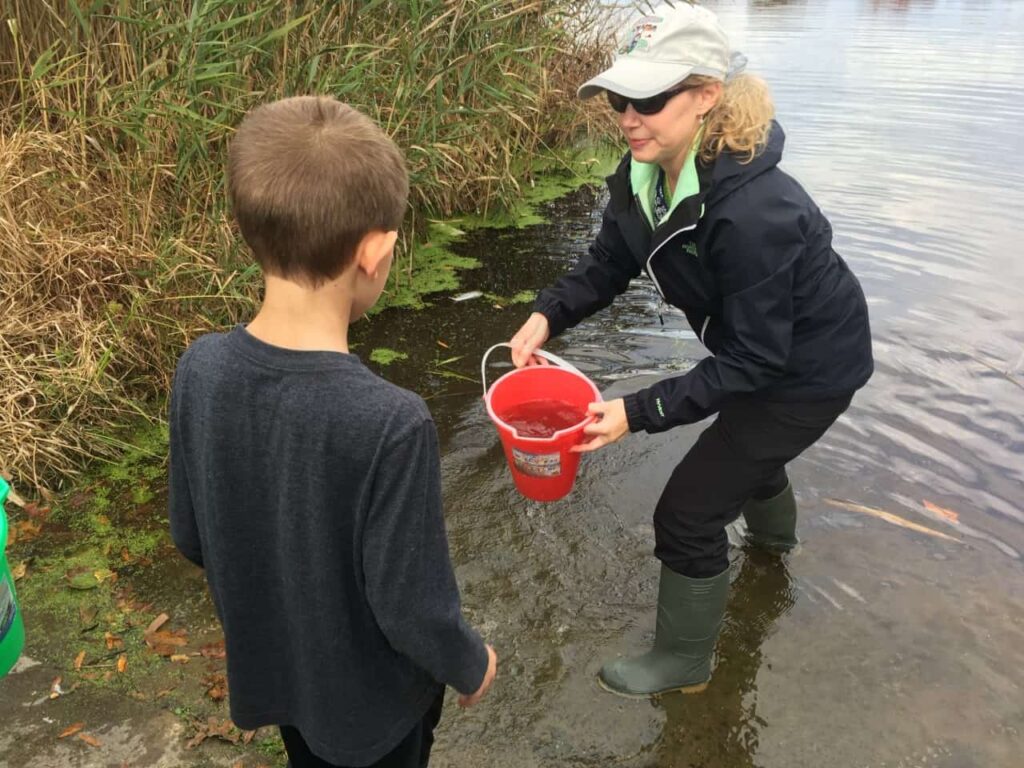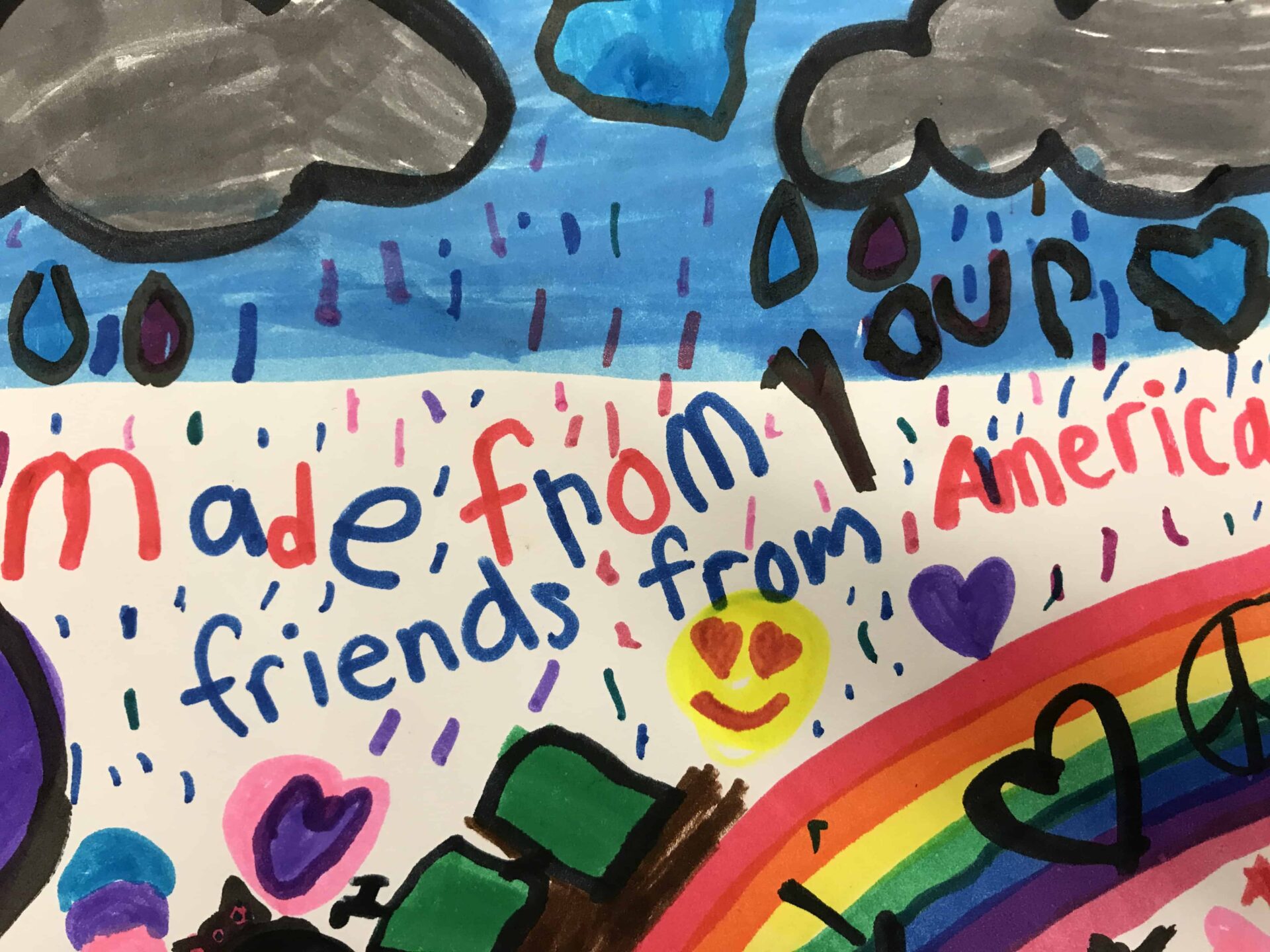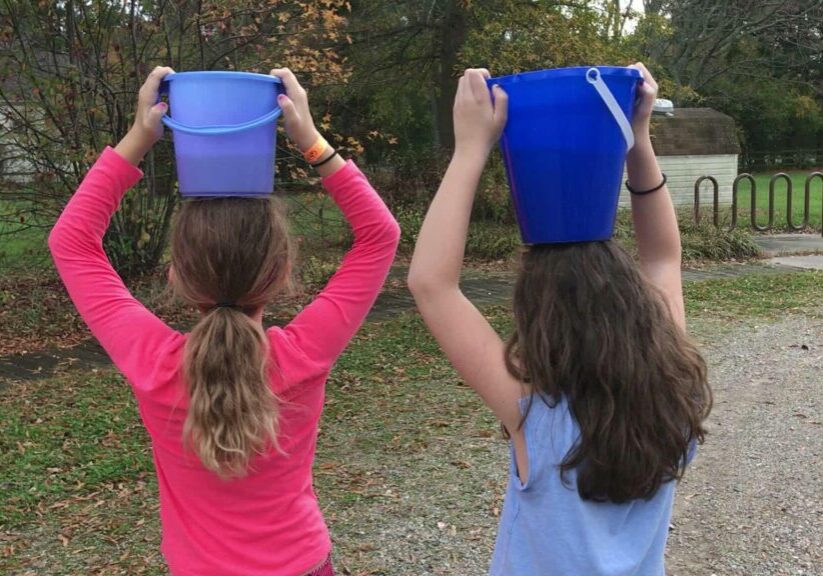By Lisa Abramovitz
One hundred fifty muddy feet stomped across a two-mile expanse of grassy knoll as students carried heavy buckets filled with murky lake water. This water was then dumped into a makeshift water filter intended to teach students about how Ugandan school children obtain potable drinking water.
This was just one of many opportunities that stemmed from my introduction to the National Geographic Educator Certification. This free opportunity for educators has broadened my global mindset and has had a profound impact on my teaching career.
The National Geographic Educator Certification program is available to PreK-12th grade formal and informal educators. It consists of three phases that include participating in an online course, designing and implementing two activities related to skills gained in the seminar, and developing a capstone project. The commitment to becoming a National Geographic Certified Teacher involves 20-30 hours of work over a three-month period.
Phase One
Phase One involved participation in an online course that introduced the National Geographic Learning Framework which, according to National Geographic, “lays out what we believe children and youth should learn from their experiences with the Society. It communicates National Geographic’s core beliefs and values, and provides guidance for every product, resource, service, and experience we design.”
First, the framework stresses the importance of cultivating the mindset of explorers. This mindset encourages curiosity, responsibility and empowerment. Next, it identifies skills needed to support exploration, such as observing, communicating, collaborating and problem solving. Finally, the framework focuses on knowledge, or key subject areas, that must be addressed, including the human journey, the changing planet and wildlife. The online course provided an extensive overview of these frameworks.
Phase Two
Phase Two takes advantage of National Geographic’s exclusive network of like-minded educators passionate about geo-literacy. In reviewing the resources submitted by my fellow educators, I came across the idea of teaching my students about global access to clean drinking water. Many American students take for granted the fact that they wake up, turn on their spigots, and have clean drinking water.
For this phase of the project, I created a lesson on potable drinking water that integrated the National Geographic Learning Framework. Students played the role of explorers, as they discovered maps and global statistics. They were shocked to learn that nearly 800 million people worldwide lack access to clean drinking water. They expanded their vocabularies to include words such as potable, aquifers, filters, desalination, contamination, drought, and sanitation.
Students then communicated and collaborated to develop possible solutions for the global water crisis. Students researched the advantages and disadvantages of each solution to the global water crisis that they had proposed.
Looking at this global crisis with the mindset of an explorer, my students developed a solid understanding of challenges faced within the human journey, which was one of the core concepts introduced in phase one.
Phase Three
Phase Three involved developing a capstone project that detailed the story of student learning and professional growth. To expand on my clean drinking water concept, I contacted a nonprofit organization in Australia, the Water Works Program, that fosters team building opportunities through building water filtration systems that are then donated to villages in Africa that lack clean drinking water.
Students participated in a two-mile trek to a local creek, which represented the distance that many children in Africa have to walk each day to gather drinking water for their families. The students placed the dirty water they carried back into one of the filters from the Water Works Program. The filters were funded by a generous grant from the Shamong Township Foundation for Educational Excellence.
Parents and community members were invited to join the students as they constructed additional filtration systems themselves, which were donated to refugee camps in Northern Uganda. Students even created original stickers that adorned the completed water filtration equipment, supporting a message of unity and inspiration.

National Geographic Explorers Festival
The benefit of obtaining my National Geographic Teacher Certification did not end with the completion of my capstone project. I was suddenly exposed to the broader opportunities that National Geographic offers.
Every year, National Geographic holds its Explorers Festival. I applied for a free opportunity to have my students paired with a National Geographic explorer. They were matched with Tashi Dhenup, a Bhutanese researcher, who uses infrared sensors to track and study big cats.
My students worked with the art teacher, Kimberly Shaw-Hartman, to create big cat masks. Students filmed an informative video about this explorer while wearing their masks. This video was viewed by Tashi Dhenup at the National Geographic Explorers Festival in Washington, D.C. Students received a video response from the explorer.
Reach the World Expedition
Through my National Geographic Educator Certification, I also learned about a wonderful opportunity to join a live expedition to Antarctica. This free opportunity provided my students with the chance to partake in a 45-day sea expedition that replicated the famous Weddell Sea Expedition. Originally led by Ernest Shackleton in 1914, the Weddell Sea Expedition was a sailing excursion to Antarctica that ended in a shipwreck.
This current expedition chartered the same course and taught the students about underwater technology used on the research vessel. Students learned about marine biology, glaciers, archeology and sea creatures.
The highlight of this project involved a live question-and-answer Skype session between my students and the researchers in Antarctica. It was a once-in-a-lifetime opportunity for students to interact with the crew of a major expedition.
National Geographic online courses
Another no-cost enrichment opportunity offered by National Geographic is its diverse selection of free online courses. Last year, I registered for a course titled Integrating Service with Learning. I learned about the importance of demonstrating to students that they can be agents of change. By using service learning, educators can empower students to make connections between their own actions and the well-being of others.
This 15-hour online course required participants to design a service project to implement with their students. I taught my students about illiteracy and the importance of early literacy and exposure to high quality picture books. My students used their knowledge to develop a schoolwide book drive. They created posters, made announcements, and developed incentive programs for our entire student body to donate books.
Their month-long efforts resulted in the donation of over 2,000 picture books to Book Smiles, a local nonprofit organization that donates books to underserved children in Philadelphia and Southern New Jersey.

National Geographic Geo-Challenge
The National Geographic Geo-Challenge provides students the opportunity to work collaboratively to solve real-world problems. Last year, my students participated in a Plastic Pollution Challenge.
National Geographic provided valuable resources, including a teacher’s guide filled with links to articles, maps, visuals and videos. Students were challenged to learn about plastic pollution affecting our oceans and local waterways. My students created a three-dimensional clay map that modeled plastic pollution at a local waterway. The map was featured in a five-minute movie written, filmed, and edited by the students. The film was submitted to a nationwide Geo Challenge competition. National Geographic awarded certificates to all of my students for their participation.
Not only were my students proud of their efforts, but they were introduced to the world of documentary filmmaking.
National Geographic giant maps
National Geographic has designed some unique tools to assist with the instruction of geo-literacy. Funded by a generous grant from the Shamong Township Foundation for Educational Excellence, the school purchased giant continent maps that covered the floors of our gymnasium.
I collaborated with our physical education teacher, Scott McIntyre, to design interactive lessons that integrated geography and physical activity. These 30 by 30 foot maps provided students with the opportunity to engage in kinesthetic geography lessons. Students hopped from coast to coast, slithered around the borders of countries, and “swam” across major bodies of water. Students immediately became more geographically competent.
Wild Earth Safari Live
One of the key subjects addressed in the National Geographic Framework is wildlife. Wild Earth Safari Live is a program that allows teachers to travel virtually with their students to the hidden gems of Africa’s game parks.
My students enjoyed the virtual bumpy ride in a four-wheel drive vehicle across the African veld. As they encountered elephants and unique birds, they asked the guides questions over Skype. This unique platform for building knowledge about wildlife was another perk available through National Geographic.
Next steps for interested educators and related resources
Signing up to pursue my National Geographic Educator Certification has expanded my knowledge of the world, strengthened my repertoire of teaching strategies, and connected me with like-minded colleagues. The powerful activities that I have developed as a result of my affiliation with National Geographic have exposed me to a level of student engagement that keeps students curious, empowered and ready to change the world.
I should also note that the incredible support provided by my principal, Nicole Moore, and my superintendent, Dr. Christine Vespe, has been instrumental in providing unique and well-rounded educational experiences for my students.
American essayist Ralph Waldo Emerson appropriately stated, “The mind, once stretched by a new idea, never returns to its original dimensions.” I would highly recommend the National Geographic Teacher Certification to any educators looking to foster global citizenship.
Lisa Abramovitz is the K-4 teacher in the gifted and talented program at Indian Mills Elementary School in Shamong. She holds the National Geographic Certification. Abramovitz can be reached at labramovitz@shamongschools.org.
What is geo-literacy?
Geo-literacy is a newly coined term adopted by National Geographic. It focuses on the interactions, interconnections, and implications of how our world works. It involves using geographic understanding and reasoning to make crucial decisions affecting our planet.
Resources for educators
National Geographic Teacher Certification
bit.ly/natgeotc
Reach the World Expedition
reachtheworld.org
Wild Earth Live Safari
wildearth.tv/tag/national-geographic
National Geographic Free Online Courses
bit.ly/natgeoedpd
National Geographic Explorer Classroom
bit.ly/natgeoclsrm
National Geographic Giant Maps
nationalgeographic.org/education/giant-maps
Water Works Program
waterworksprogram.com
